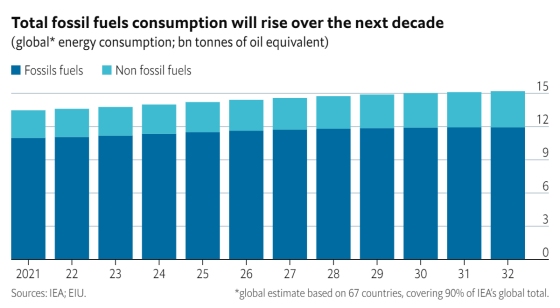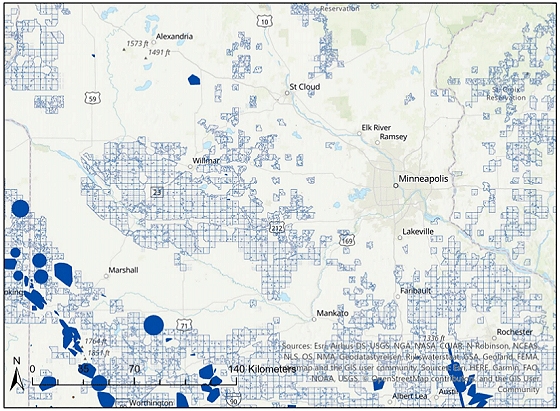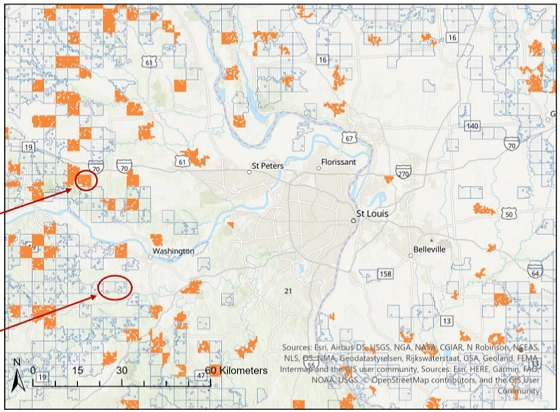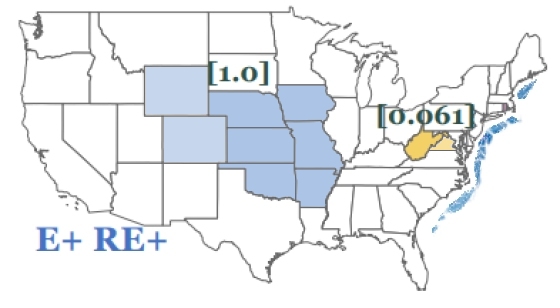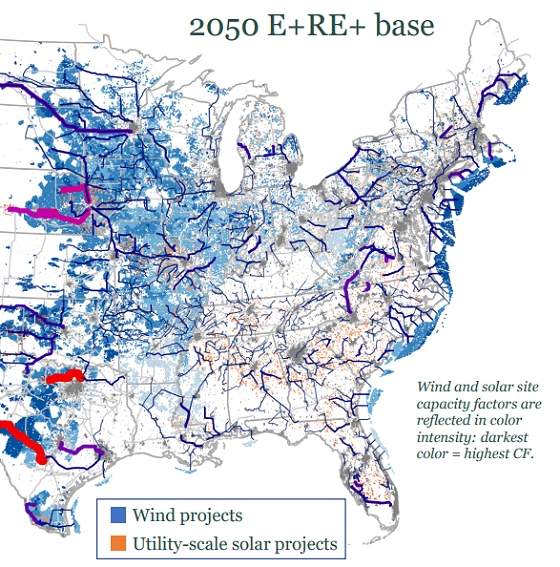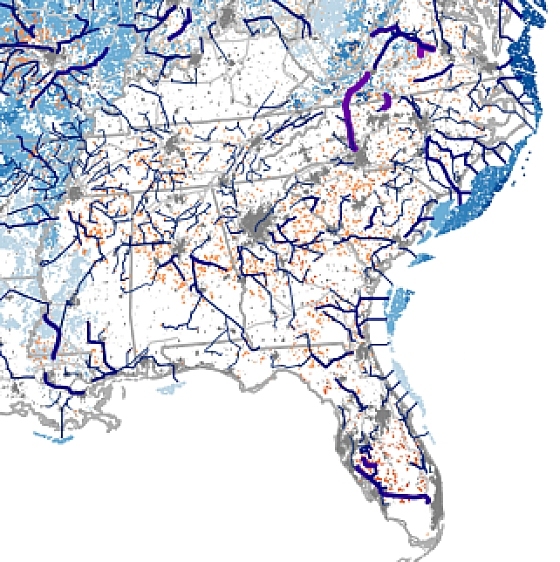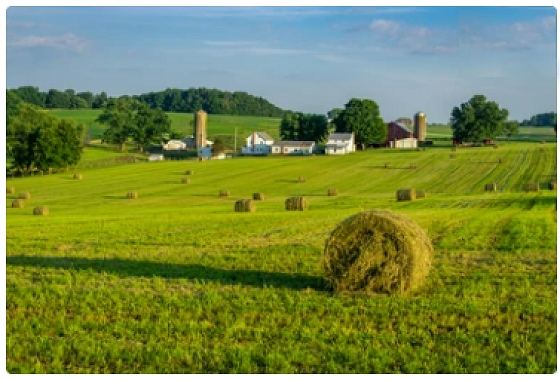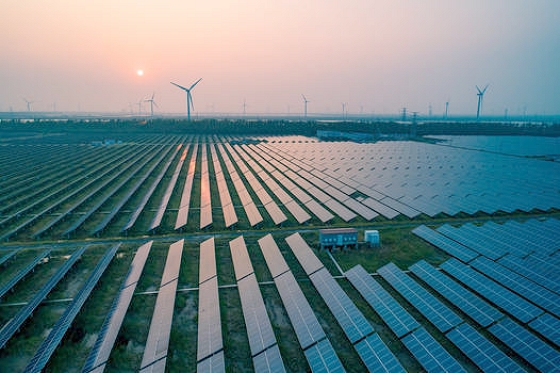May 23 2024 note:
The diabolical idiocy continues unabated:
Various media sources keep telling you that the world is now getting 30 percent of its energy from renewables. It's actually 6 percent as of this writing. They don't know, or simply don't want you to know, that electrical energy consumption is only 20 percent of total energy consumption on a global basis.
They also don't know, or simply don't want you to know, that fossil fuel energy consumption continues to rise faster than renewable energy consumption, as of this writing.
Original document:
Roger Luebeck
May 13 2021
The following is standard reporting by the media.
Bill Chappell of NPR writes on Tuesday, May 11, 2021:
>>
--------------------------------------------
Renewable Energy Capacity Jumped 45% Worldwide In 2020
Despite the pandemic, the world's renewable energy capacity jumped 45% to 280 gigawatts in 2020, part of "an unprecedented boom" in wind and solar energy.
--------------------------------------------
<<
Actually, global consumption of the combination of wind and solar energy increased from 3.08 percent to 3.59 percent of total global energy consumption from 2019 to 2020.
And that increase in solar+wind energy consumption
was actually outpaced by our increased total energy
consumption
by a factor of three, meaning that we
actually slipped backwards by 2000 TWh in our quest
to power the world with wind and solar.
This poor energy reporter, as with most of them, doesn't know the difference between power and energy; thus his opening sentence has no meaning. Energy is measured in gigawatt hours, while power is measured in gigawatts. It would be like saying that the distance from Minneapolis to Bemidji is 215 miles per hour.
To promote renewable energy as a replacement for fossil fuels and nuclear energy is to essentially promote wind and solar energy, as all other renewables are minor players.
In Chappell's opening sentence, as in his headline, he claims that "the world's renewable [power] capacity jumped 45% to 280 gigawatts in 2020".
Actually, the world's renewable power capacity is ten
times that amount. What increased by 45 percent is
the amount of renewable power capacity added in 2020
(280 GW) as compared to the amount of renewable
power capacity added in 2019 (193 GW).
(I wrote NPR an email and Chappell then corrected his headline and opening paragraph. Unfortunately, the public never sees the corrected version of a story as the story has already been squeezed out by the following day's news.)
From 2019 to 2020, global consumption of the combination of solar and wind energy increased by about 1000 TWh. Total global energy consumption continues to increase at a fairly steady rate of two percent per year, which currently yields approximately 3000 additional TWh per year. This means that from 2019 to 2020
we actually slipped backwards by 2000 TWh in our quest to power the world with wind and solar.
It's hard to sell the public on the notion that we're up and running on solar and wind if we actually give them the preceding information. A much better sell is to
falsely state that energy from renewables has jumped 45 percent in one year, rather than informing them that
the actual increase in solar+wind energy consumption was outpaced by our increased total energy consumption by a factor of three.
Chappell's headline is seriously erroneous and seriously misleading in three ways. His overall presentation is seriously erroneous and seriously misleading in several ways.
The story makes no mention of capacity factors, the relationship between intermittency and demand fluctuation, or battery energy storage issues associated with wind and solar projects. In keeping with the
"unprecedented boom" proclamation of the opening sentence, it goes on to spew out "gee whiz" raw numbers regarding the number of houses that can be powered by this or that new wind farm installation, even though these are
actually mere drops in the bucket:
Chappell cites the new 2.8 billion dollar 800 MW capacity off-shore wind turbine project.
He does not mention any of the following:
With the typical 0.33 capacity factor, this yields 264 MW generated power. With a future (optimistic) 0.6 buffering factor (mismatches between power generation and hour by hour demand, what irregularities the power grid can accomodate in the absence of fossil fuel or nuclear power generation, energy lost during battery storage, and the energy cost of the buffering batteries themselves), this yields 158 MW power consumption. U.S. average total power consumption is 2,400,000 MW.
Thus that off-shore installation will provide for no more than
1/15000 of U.S. energy. The range is likely between 1/30000 and 1/15000. Thus
we would need between 15,000 and 30,000 of those gee-whiz wind turbine projects.
15000 x 2.8 billion dollars = 42 trillion dollars.
And that doesn't take into account the enormous expansion of the electric grid entailed by using solar and wind energy.
About 20 percent of U.S. energy goes into transportation, and electric motors are more efficient than internal combustion engines; but there are other considerations, mentioned below, that offset that savings.
If the world were to build solar and wind installations at triple our current higher rate, then we'd be to the point where we are neither gaining nor losing ground regarding changing the rate of CO2 emissions.
But that is only if one ignores the CO2 emissions resulting from the manufacture, installation, maintenance, replacement and recycling of the wind turbine and solar panel parts. One would also need to ignore the environmental impact of the manufacturing and replacement of storage batteries, and as mentioned, the enormous expansion of the electric grid.
Wind turbine energy requires eleven times as much concrete and five times as much steel per watt hour as nuclear energy. The blades themselves, a composite material, need periodic replacing, as do storage batteries.
It's likely to be several years before we reach the point where we're even slowing the rate of global CO2 emissions. And remember, the stated goal is to bring net CO2 emissions to approximately zero -- not merely slow the rate of those emissions. Meanwhile, we'll have decimated the rural countryside with solar and wind farms, both in the visual and audio sense; and not only for ourselves, but also for all the wildlife.
Capacity, generation and consumption are three different quantities, in descending order. Consumption is the bottom line for any analysis.
In the images below, capacity factors, the relationship between intermittency and demand fluctuation, and energy storage issues are taken into account. The images are in regard to total energy consumption, and show the amount of required land space.
Due to the intermittent output of solar and wind installations, we would need to triple the number of electrical transmission towers and lines if we were to rely mostly on solar and wind energy as mere replacements for coal fired electricity generation. To use solar and wind for all of U.S. energy, the number of towers and transmission lines would need to be multiplied many times over.
There is no intermittency issue with nuclear energy, and therefore far fewer transmission lines would be needed. Also, they automatically power up and down, meaning they self-buffer without the need for battery or fossil fuel backup.
------------------------
See note 3 below for the first comprehensive analysis of what's involved in relying almost solely on wind and solar energy without a serious reduction in energy consumption. It's a Princeton study which was published six months after the document that you are reading.
------------------------
Hydro power should be considered to be beyond maxed out. We've already destroyed too many river valley environments. Currently, hydro power accounts for about 3 to 4 percent of global consumed energy.
Nuclear reactors can supply energy more cheaply than coal, solar PV or wind; and with just a tiny fraction of the land footprint, raw materials and waste product. And they are silent.
However.. without an immediate reduction in world energy consumption, the likelihood of meeting the 2015 Paris Climate Accord goal is nil even if we were to rely almost exclusively on nuclear power. We'll not build them fast enough to meet that particular goal.
The images below show the land area required to meet the total energy needs of the United States with wind farms and solar arrays.
They do not reflect the use of hydrogen gas to power aircraft or ultra-heavy land vehicles. Hydrogen gas would need to be obtained through bio-mass harvesting.
I created these images based on my calculations:
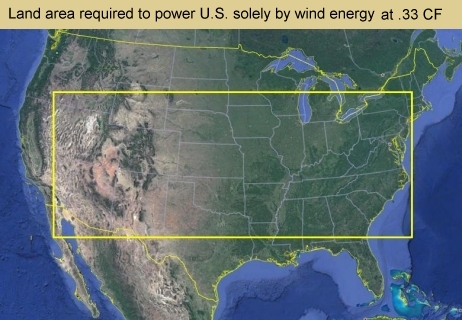
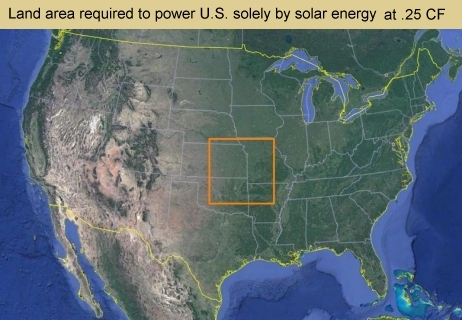
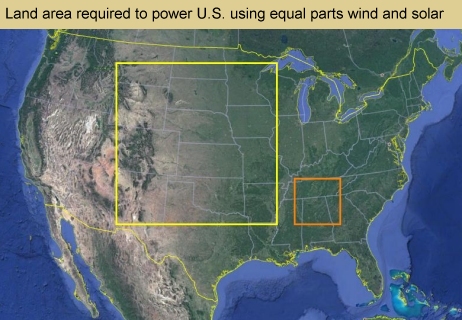
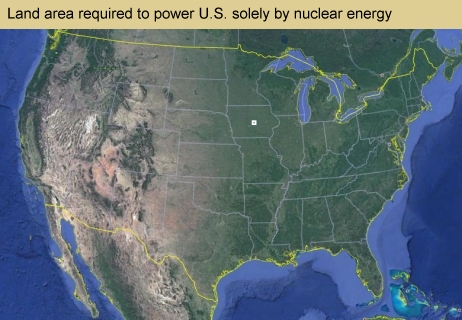
Note 1. The 3.08 percent (2019) and 3.59 percent (2020) contribution of combined wind & solar is illusory: Our coal and nuclear plants are able to buffer up and down as needed to somewhat accomodate the unpredictable fluctuation of wind and solar power output. Without nuclear, coal and petroleum providing most of our energy needs, the electrical grid would have to be expanded many times over, and battery storage would also have to be expanded, diminishing the net contribution of solar and wind energy.
Note 2. Passive geothermal heating and cooling could eventually become significant, whereas ethanol has no chance of that. Every time you fill your tank with ethanol, you are contributing to global warming more than you would by filling up with pure gasoline. About as much carbon is released in the process of making ethanol as what is saved by burning ethanol instead of pure gasoline. And the land used for growing this damaging fuel is never allowed to capture carbon properly, as it would if it were left in a natural state or used for traditional farming and allowed to recover periodically. Ethanol exists only as an attempt by non-analytical and/or opportunistic politicians to win votes by claiming it would set us free from reliance on foreign oil. The false ecological pitch was part of the misrepresentation, and big business seized the opportunity to get rich from the government subsidy. - R.L. 04/15/2019
Roger Luebeck
May 13 2021
=========================================
=========================================
Note 3.
February 18 2023
Princeton study -- October 29, 2021
This comprehensive analysis, published six months after my document, confirms that the researchers and I went to the same elementary school and use the same arithmetic.
"Daunting challenges" mentioned in the Princeton study dictate, according to their study, that in order to go with all-renewable energy without a sharp reduction in energy consumption we would need to:
(quotes in blue)
Deploy physical assets and infrastructure at unprecedented rates.
Mobilize capital investments at unprecedented rates.
Deploy technology and its associated infrastructure at historically unprecedented rates.
Live with widespread visual impacts, land-use impacts, and other ecological impacts of wind, solar, grid expansion and CO2 sequestration.
They also state that their energy-source, land-space allotments and carbon-capture scheme do not take into consideration the issue of non-C02 emissions beyond the year 2050. Specifically, regarding post-2050, they state:
Non-CO2 greenhouse gas emissions each year must be compensated by removal of an equivalent amount of CO2 from the atmosphere.
Sources of methane and nitrous oxides -- the majority of non-CO2 emissions today -- are widely dispersed, making mitigation more challenging; and ..
non-CO2 emissions are projected to grow
in the future under business-as-usual.




